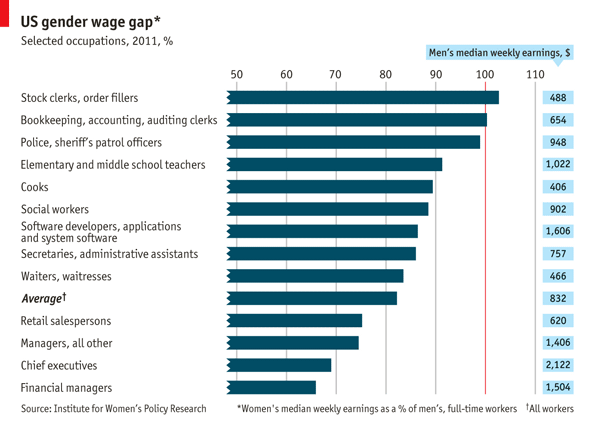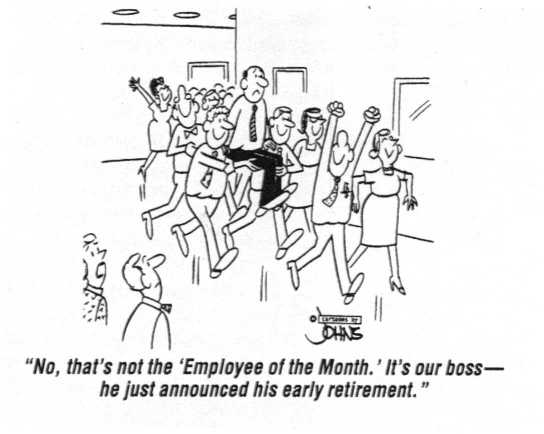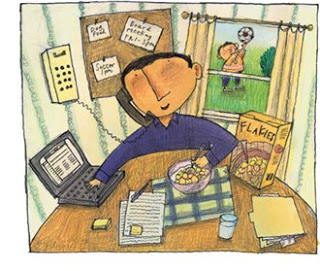
by Mindy Fried | Jun 10, 2016 | aging, connections with people, engaged aging, family, feminism, gender, health care, House Un-American Activities Committee, making choices, resiliency, theatre, Uncategorized, work and family balance
In this interview, Gayle Sulik, Founder of the Breast Cancer Consortium and Co-Founder of Feminist Reflections, talks with Mindy about her new book, Caring for Red: A Daughter’s Memoir (Vanderbilt University Press, forthcoming, Summer, 2016).
 GAYLE: Mindy Fried, your new book Caring for Red tells a story of you and your sister taking care of your 97-old father in the last year of his life in an assisted living facility. Before we talk about your experience caring for your dad, Manny, tell me a little about him. Who was this colorful character? After all, he earned the nickname “Red.” Sounds fiery to me!
GAYLE: Mindy Fried, your new book Caring for Red tells a story of you and your sister taking care of your 97-old father in the last year of his life in an assisted living facility. Before we talk about your experience caring for your dad, Manny, tell me a little about him. Who was this colorful character? After all, he earned the nickname “Red.” Sounds fiery to me!
MINDY: My father was a person with many lives. As a young man, he was a labor organizer for the United Electrical Workers union where he organized factory workers. That was when industrial labor was still predominantly based in the US, and not in third world countries where labor is cheaper. At some point, he joined the Communist Party. I’m not sure how active he was or for how long, but certainly at that time, being considered a “Communist” was tantamount to being a terrorist in our current political climate. In1954, when I was around 4 years old, he was subpoenaed to testify in front of the House Un-American Activities Committee (HUAC), a very traumatic experience for him, and for my whole family. He was “blacklisted”, meaning that when he applied for jobs, he was turned away. Eventually, he was hired by a Canadian company where he sold life insurance for around 15 years. That’s the kind of work he did through much of my childhood. But he was also writing plays based on his experience as a labor organizer, and he returned to the theatre as an actor, something he had done years before. When I was a teenager in the 1960s, he was subpoenaed by HUAC again. That was tough, but times had changed quite a bit and the ramifications weren’t quite as dire as they were the first time around. He ended up going back to school when he was in his 50s. Really impressive, since he had only one year of college under his belt. He went straight from finishing an undergraduate degree to working on a Ph.D. in English. His final career was as an English professor at SUNY Buffalo State College. You might say that nothing kept this guy down. He was a great role model in that sense.
GAYLE: How did your family survive the impact of the McCarthy period?
MINDY: I grew up with two people who were angry with each other often, but it was quiet anger. That was hard. I was lucky to have a best friend who moved in down the street from me when I was 5 years old, and her family basically adopted me. She liked my house because it was quiet, and I liked hers because it was lively and warm and loving. She became my “non-bio” sister, as we say; we’re still close today. Her parents became surrogate parents, and I am ever-grateful for that. They were just very attentive; my parents were often distracted. It was great to have another family a few doors down the street. That was one way I coped. But as a family, we also believed that my father made the right choices, in how he challenged HUAC, and continued to stand up for his beliefs. Having a sense of doing the right thing goes a long way.
GAYLE: Another name associated with Manny Fried, is “Morrie.” Six years before your father died, he played the character MORRIE in a play called Tuesdays with Morrie. As the story goes, a University graduate visits his former mentor, a sociologist who is slowly dying of a progressive disease. You write that your father inhabited that role fully, and that it helped to bring you closer together. Tell me why.
Well first of all, it was a big deal to play Morrie, not only because it was a great opportunity for my father, but also because he got to perform at the Studio Arena Theater, which had blacklisted him for many years. For me, the other exciting thing about him getting this role was that Morrie was a sociologist in my own department at Brandeis University. I knew Morrie, and the moment that my dad got the part, I saw it as an opportunity for the two of us to connect around his preparation and performance. I introduced him to Gordie Fellman, one of Morrie’s closest friends and colleagues from Brandeis. And I introduced him to a couple of Buddhists and sociologists who called themselves “Monday’s with Morrie”, as opposed to Tuesdays with Morrie (upon which the book and play were based). We also watched the Frontline TV series that Ted Koppel produced about Morrie, where Koppel interviewed him over the period of time as he was dying of ALS. When my dad came to visit me, he would have these meetings, and he would run his lines with me, and he would practice a grapevine dance from the play in my narrow hallway. It was just this really sweet thing that we connected around, and then obviously I always went to see him when he acted, so it was great to see him in the play, and he really did a beautiful job. People are always kind of amazed when they see old people function in any way, but seeing him excel at inhabiting this character – I think it was a really powerful experience for the audience and he pulled it off; he did a great job.
GAYLE: In your book, you describe a father who was loving – someone you felt deeply close with – but also a man who was full of himself. Did you feel resentment about taking care of him in this last year of his life?
MINDY: Well I think that this a really important question because as adult children, many of us have mixed feelings about our parents. The answer is “no”, I didn’t resent him. But it took me many years to understand him, to find equal footing with him, to find my voice with him, since he was a forceful speaker, sometimes controlling, and sometimes discounting of opinions that differed from his. He once told me that if I wasn’t sure about something, just guess, and that 99% of the time I’d be right. I was in my 30s when he gave me this advice, and by then I had his “number” and realized that this was sort of ridiculous. But he actually believed he was right most of the time! That said, I had deep respect for him and for his values and choices in life. He centered my world, for many years. In “exchange theory”, as it applies to families and relationships, the notion is that parents care for their children in one period of time, and later in life, when elder parents need support, children care for their parents. When it came time to care for my father, I did it with all my heart.
GAYLE: How did the father-daughter relationship change as Manny aged?
MINDY: My father and I were very close. Like most people, he was a flawed human being. He made serious choices in his life that impacted our family. But I had a deep respect for him, and we had a lot in common politically. For me, being part of the Women’s Movement in the 70s helped me better understand that despite being a good guy who was committed to social justice, he was pretty “old school”. I got frustrated with what a poor listener he was, and how I often had to fight for “air time” in conversations with him. But I did learn how to argue and debate because of him. I believe he felt I could be anyone or anything I wanted to be. And while he wasn’t comfortable “having or expressing feelings”, he was emotionally raw much of his life. That was one effect of McCarthyism on his life, and I understood that about him. Over the years, I understood enough of who he was to accept his shortcomings and his vulnerabilities and to just kind of let it go and say, “ok, here’s this person in the last bit of his life,” and to really be as fully present for him without losing myself.
GAYLE: You chronicle in your book many attempts, successful and unsuccessful, to find a place for your father to live that would meet his growing care needs AND offer the kind of life that fulfilled him. This was not easy, and sometimes your father was less than helpful. Tell me what worked, and what didn’t?
MINDY: I think one thing that worked was that I put myself in his shoes. For example, when we went and visited this super groovy retirement community that was connected to a college and he said to me, “there is absolutely no way I am going to move in there”. I imagined myself living with people that we met with, and I thought “I couldn’t do that either, this would be kind of horrible”. Not that they were bad people; it just felt foreign. These weren’t people he would choose to be friends with. I think that probably the most important thing as somebody gets older is to respect where they’re coming from. And I think it’s important to start thinking about these issues early on because you know, if you are trying to make a decision when it’s dire, the whole process of decision making is much more rife with emotion. I believe that talking about these things before you are in a crisis really makes a huge difference. And that helped us a lot.
GAYLE: Your father lived in Assisted Living for the final year of his life. Am I correct?
MINDY: Even though the book uses a one-year time frame, it was actually a year and a half that my sister and I cared for our father. It worked really well, until it didn’t. We learned what assisted living was able to provide for him as well as its limitations. Ultimately, in the last few months, he needed round the clock care. But he was able to live and die in his small apartment in assisted living. As an ethnography, Caring for Red provides a real sense of life in assisted living, the norms and values that drive human interaction, the hierarchy of staff, and the structures that define the experience within this institutional form of care that aims to provide a home-like environment.
GAYLE: Can you describe what Assisted Living is?
MINDY: Well, people think of it as kind of a hybrid health and home service, but in fact it’s really just more home than health oriented. It’s a place to live; there are regular meals; there often are activities; and staff provide services to residents – up to a point. Some assisted living facilities have medical staff; others don’t. We chose a place that had some nursing care, including medical people who delivered medications, and there was actually a doctor, a geriatrician, who came by once a week. But we had to pay for medical care because it was beyond the basic services offered. We ended up supplementing even more services in order to avoid having to send him to a nursing home. But that’s a longer story…
GAYLE: You were also a long-distance caregiver. How did you manage your father’s care from afar?
MINDY: I was lucky that I had a sister to do this with, so between the two of us we shared the caregiving work. We visited every weekend; we talked on the phone all the time; and we were on the phone constantly with caregivers, as well as his friends to help arrange his social life.
GAYLE: What do you hope for your book? How do you hope people will be affected by reading it?
MINDY: I guess if nothing else, I’d like it to contribute to a more open conversation about the trials and tribulations of caregiving work. While Caring for Red includes references to scholarly work on caregiving, I will be lucky if people feel more of a heart connection to the issues, particularly those people who are caring for an elder parent. We all have a range of feelings towards the people who cared for us when we were young. It’s important to recognize that there are a lot of people who love their parents; there are some people who hate their parents; and there are some people who have mixed feelings about their parents. Taking care of them in those final throes of life is jarring; AND it’s an opportunity to reconcile unresolved feelings; it’s an opportunity to treat elder parents with dignity and to make that last piece of life worth living. It’s also something that we’re all going to face at some point so I think that how we care for our parents is also a role model for how the younger people around us can – and hopefully will – care for us.
There’s no ultimate how-to book on caring for our parents. We all learn by what we see around us. So I’d like a dialogue to be stimulated about these issues. Because it’s very hard work – unpaid caregiving labor – and people don’t talk about this shit because it’s like, ‘oh it’s too depressing’, but hey, it’s life! We’re all going to die, you know, and somebody’s hopefully going to take care of us, so let’s think about how we want that to look within families and within society.
I also hope that academics will use this book in classes on aging, on death and dying, and on anything related to the life course. Moreover, Caring for Red is an ethnography, “set” in assisted living, so I hope it will be used in methods classes. And finally, for those who take interest in the history of facism and particularly, in the McCarthy era, the book presents quite a story, which I believe we must not lose.
GAYLE: Thank you, Mindy Fried. The deeply moving and insightful memoir – “Caring for Red”- is available for pre-order on Amazon.com.

by Mindy Fried | Apr 8, 2013 | child care, health care, inequality, Marissa Bayer, parental leave policy, Sheryl Sandberg, social policy, value of caregiving work, women and work, women managers, work and family balance, work culture

What happens when some women break the glass ceiling? A few of them become authors of best-selling novels in which they deconstruct their workplace experiences and offer advice to others. This is a good thing, in the tradition of sisters helping one another out. But which sisters and what kind of advice do they offer? Perhaps the most popular and controversial of the genre right now is Lean In, authored by Facebook Executive, Sheryl Sandberg, who authored an endearingly honest and forthright book about what women need to do to overcome obstacles and move up the career ladder. What I love about Sandberg’s writing is that she has broken the code of silence about what it feels like to be a woman in corporate America. She does it with personal stories about her own insecurities and vulnerabilities as a woman manager, as well as with facts about the gendered workplace, acknowledging the uneven playing field in which a preponderance of men dominate top positions in business and government.
 I’m sure that her message resonates with thousands of professional working women across America. But Sandberg’s narrative unfortunately does not speak to women in non-professional jobs, where being assertive in the workplace doesn’t get you more; in fact, it just might get you fired. In fact, most women workers aren’t aiming for the top; they’re simply trying to make ends meet.
I’m sure that her message resonates with thousands of professional working women across America. But Sandberg’s narrative unfortunately does not speak to women in non-professional jobs, where being assertive in the workplace doesn’t get you more; in fact, it just might get you fired. In fact, most women workers aren’t aiming for the top; they’re simply trying to make ends meet.
One could argue that having women on top will make it better for all women, but that’s not necessarily the case. All the stereotypes that persist about women in the broader society – their inability to be assertive or think rationally in a crisis – become the yardsticks of assessment of women’s behavior when they are in management positions. Simply because they are women, they are judged more critically and closely. Not only is this personally uncomfortable for them; it may also affect their status in a company or government organization. Women on top must develop survival strategies to deal with pervasive sexism they experience on a daily basis.

They are subject to a dominant workplace culture in America that overvalues long hours as a measure of commitment and loyalty. This is the backdrop against which women in management – or high level positions – operate. When women upper-level managers make policies about their subordinates’ work policies, they are operating in a “gender-loaded zone”, in which their decisions may be scrutinized by their male colleagues.
We don’t need to look far to find a top female manager, Yahoo’s CEO Marissa Bayer, who offers a great example of this phenomenon with her recent announcement that she is eliminating telecommuting for her employees. http://www.forbes.com/sites/jennagoudreau/2013/02/25/back-to-the-stone-age-new-yahoo-ceo-marissa-mayer-bans-working-from-home/ This decree is counter to reams of data that support telecommuting as a cost-saving measure that may even increase worker productivity http://mindysmuses.blogspot.com/2010/12/telecommuting-its-about-time-and-place.html. In fact, the data is so strong that the U.S. now has a national telecommuting policy that applies to all federal workers, enacted as a result of the Telework Enhancement Act of 2010.

The reality is that professions that are dominated by men pay more, and those that are dominated by women pay less (e.g., programming vs. coding, doctoring vs. nursing, tenure track teaching job vs teaching kindergarten). One strategy is to encourage more women to pursue higher paid professions, and that’s fine. But this doesn’t address the devaluing of jobs that are more “gender-coded” like teaching, nursing, and anything related to caregiving work.
While I fully support the notion of women asserting themselves in the workplace (when it isn’t too risky!), many women – and men – would benefit from a range of public policies that protect their jobs and support their capacity to balance their work lives with their personal – including family – demands. In my own research on parental leave use in a large financial services corporation, I found that upper-level women didn’t use the policy AT ALL, largely because they either didn’t have kids (was this a business decision?) or because they waited until their children were older before going after upper management jobs. Women in middle-management used less leave time than they were legally allowed to take, and women in lower-level jobs took the least amount of leave time. What about men? They tended not to use the parental leave policy at all; rather, they took two weeks of vacation time after the birth or adoption of a new baby. What I found was two-fold: Given that we only have an unpaid leave policy in the U.S. (counter to most other industrial countries that provide paid leaves), family economics often called for the lower-paid worker to take time off to care for a newly arrived baby, and that was usually a woman. Moreover, the culture of the workplace rewards long hours, so that parental leave is considered time “taken” away from the job (e.g., profits) over time taken to parent, an unpaid job that is devalued by business norms. Hence the title of my book: Taking Time: Parental Leave Policy and Corporate Culture. http://www.amazon.com/Taking-Time-Women-Political-Economy/dp/1566396476

A more complete picture – one that addresses the needs of all workers – must include a set of universal policies, including pay equity to break down gendered wage differentials, paid parental leave to ensure that women AND men use leave time, flexible work policies that allow people to balance their work and personal demands, and universal child care to ensure that all young children have access to quality, affordable early care and education. In addition to offering advice about being more assertive in the workplace, we need these policies if we are to make any inroads towards changing the playing field for women and men. Moreover, for those in non-management positions, there must be formal policies as well as informal organizational support to ensure that being assertive in the workplace won’t cost them their jobs.
How can we enhance the recent messaging around women in the workplace to ensure that it addresses not only the micro level – how we as women and men operate in the context of our workplaces – but also the macro level, how workplace policies – including family policies – are needed to establish protections in the workplace?
by Mindy Fried | Jan 21, 2011 | child care, early education and care, family, military family policies, parental leave policy, policy, work and family balance
A number of years ago, I was invited to the Pentagon to talk about a work and family study I was conducting. Anyone who knows me may find this fact pretty incongruous. But I was intrigued to find out about the human resources side of the military. Given my history of antiwar and women’s rights activities – and the fact that my father had been subpoenaed to appear before the House Un-American Activities Committee in the 1950s – I fully imagined that I wouldn’t make it through the security screening. But, to my surprise, I sailed through. I found myself being chaperoned through dingy hallways to a very nondescript office for a meeting with a powerhouse of a woman who headed up programming on family supports for military “members” and their families.

Over the next two years, I worked with her and a real live Colonel, a kind and gentle soul who was an expert on domestic violence issues in the military. Our work together focused on assessing how well various military family support agencies were able to collaborate. Their “mission” was to support families through the challenges of dealing with deployment and loss.
I initially felt like a fish out of water working within this institution. But I soon connected with the human dimension and discovered that within the military, there are people from incredibly diverse backgrounds – including political perspectives – who really care about people’s well-being. I also learned that the military has far more progressive family policies than governmental policies in the civilian sphere, which rely on a hodgepodge of precarious private and public funding to service those in need.

I discovered, for example, that the military provides high-quality, affordable and accessible childcare in which early childhood teachers are paid good wages. According to Gail Zelman and Susan Gates, researchers at RAND,
“While there are no easy or obvious solutions to the childcare problem, policymakers can look to an unlikely source from ideas about improving childcare: the military. The US Department of Defense (DoD) has succeeded in optimizing the three key aspects of child care delivery – availability, quality and affordability – a juggling act unduplicated anywhere else in the country. The system currently meets around 60% of the assessed need, serving about 176,000 children 6 weeks to 12 years old in 900 centers and in 9,200 family child care homes nationwide. (Family child care homes are usually run by military spouses.)”
Let’s be honest here: The military’s desire for high levels of productivity and commitment among its members – and the need for support from military family members – are the drivers underpinning military support for these policies.
So what can policymakers learn from DoD’s experience, ask researchers Zellman and Gates?
“The clear message is that affordable, high-quality child care requires a system level commitment to quality, as well as incentives and funding to make it a reality.”

In contrast, our “civilian” child care system in the U.S. is underfunded and suffers from lack of quality, which can largely be attributed to low wages and inadequate support for its workers. In fact, the turnover rate of early childhood teachers in the U.S. is between 25-30%. Research points to a “turnover climate” which affects overall program quality. One study found that highly trained teachers (BA level or higher with specialized training) “were more likely to leave their jobs if they earned lower wages, worked with fewer highly trained teachers and worked in a climate with less stability.” (Whitebook, at al, 2001). Therefore, worker retention is linked to the stability of the program and ultimately, to higher quality.
In addition to high quality, affordable child care, the military offers paid parental leave and universal health care. Ironically, when progressives promote these policies at the federal (civilian) level, conservatives cry ‘socialism!’
In a memo entitled, “For Our Air Force Family,” Lieutenant General, USAF, Assistant Vice Chief of Staff, Joseph H. Wehrle, Jr., says,
“The United States Air Force is committed to taking care of its own. Steadfast, homefront support is provided to family members by the Integrated Delivery System… As always, we remain One Force, One Family.”
in the military, the credo – “We take care of our own.” – is motivated by the belief that this will support “readiness” for battle, increase productivity, reduce turnover, and ease the process of leaving one’s family behind to put oneself “in harms way” around the globe.
Without such immediate drivers in the corporate or non-military governmental sphere, it is hard to make the case – or as human resource professionals would say, the business case – for progressive family policies. But we don’t have to only look to Europe for inspiration around family policies; we can look to the U.S. military to find some of the most progressive policies in this nation. Don’t we all deserve them?

by Mindy Fried | Dec 19, 2010 | management policy, policy, positive work culture, productivity, women and work, work and family balance

We’ve all had them, and maybe some of us are them! (No, not us!) As a sociologist who has spent many years studying workplaces, I am indebted to a number of bad bosses. Although some of them made my life miserable, they inspired me to understand why. So in the spirit of acknowledgment, I must first say thank you to the boss who told me I was destroying my life by leaving the job to pursue another direction. (Destroying whose life?) And thank you, too, to the psychotic boss who knew that I supported a particular political cause, and out of nowhere screamed at me, “Don’t ever let me see you on television with a sign in your hands supporting that Communist (crap).” Whoa! It hadn’t occurred to me, but now that you mention it…And thank you to the newly appointed manager who, in her first month on the job, falsely accused me of serious financial improprieties. (One month, and many sleepless nights later, I was vindicated.)

Given these experiences, it has been therapeutic to study the American workplace and to dissect some of the problems that contribute to “bad-bossism.” Despite having been “stung” by a few bad bosses, I still believe that people – including some bad bosses – are basically good.
So what is it that leads some people in management positions to “behave badly?” Well for a start, the workplace is a microcosm of our larger culture and society. Societal problems that exist outside the office are likely to surface within it as well, playing out via power dynamics between and among employees, based on their occupational status, their gender, and their racial and ethnic backgrounds.

Political economist and philosopher, Karl Marx, laid the groundwork for understanding the intrinsic tension between labor and management (or, as he would say, capital), in which a capitalist system favors profit over people. In this system, he argued, management would necessarily exploit workers with long hours and poor working conditions, in order to get more productivity out of workers, which in turn would maximize profit. With the advent of laws that limit working hours in manufacturing settings, and the regulation of working conditions, Marx’s critique and analysis continues to provide a useful framework, even though it’s probably more relevant to manufacturing work in Third World countries, where many multinational corporations have moved their operations in search of cheaper labor.

In the U.S., our current economy has increasingly shifted to knowledge-based work and services, and the lines that are drawn between workers and managers are often painted as more subtle. Nonetheless, stratification of the labor force ripples through multiple levels of professional and managerial workers. How do these dynamics affect the contemporary workplace?
Studies suggest that a number of factors shaping workplace environments contribute to the “bad boss” phenomenon:
1. Male model of the ideal worker
In this model, the “normal” trajectory of the worker is based on a “male model” of the ideal worker, a person who can work throughout his (her?) career in a continuous and uninterrupted manner, taking no time for non-work (e.g., personal, family) activities. Sociologist Erin Kelly, et al calls it a “masculinist work culture”, commenting,
“Working long hours is a sign that employees are readily available and eager to meet others’ needs; it further reinforces the ideal worker as someone – most often a man – who does not have, or does not attend to, other pressing commitments outside of work.”
With this model, work comes first. When managers perceive that’s not the case for one or more employees, it’s viewed as an affront to the company, a deviation from employee loyalty. Managers who “buy into” a “masculinist work culture” are likely to be critical of workers who challenge this norm. In a study I conducted on parental leave policy in a large financial services company, the norm was so powerful that men chose not to use the company’s generous parental leave policy, and women who used the policy took very short leaves, even though legally, all employees were entitled to longer leaves.
2. Structural issues that create a culture of competition
in our current American workplace, where the bottom line rules, there are economic pressures to produce. In line with the prevailing capitalist ethic, a culture of competition is viewed by many managers as necessary to foster productivity, with long hours as the norm. In order to sustain productivity, managers feel pressure from above to push employees to produce more, even when they realize that it’s not humanly possible. In a number of the workplace studies I’ve conducted, I’ve learned that being in a middle managerial position is often isolating. This makes these managers depressed and grumpy. Most have little support to figure out a better way, and they realize quickly that too much empathy for their “subordinates” takes too much time. Ergo, they may “act badly.”
3. Poor economic times makes managers even more grumpy
In our crisis economy, the financial pressure is even more intense, and some managers may exhibit more controlling behavior towards their employees. Managers are being more closely monitored on financial performance, and they may be even less likely to take the time to attend to employees’ feelings or needs under these conditions.
4. “Deal with it; I did!”
Some managers worked hard to get where they are, and along the way, they experienced a lot of pain themselves. When they get to the top (or close to it), some pass on what is familiar. While many of the managers I’ve interviewed worked very hard to respond to the needs of those under their supervision, some were less than understanding.
5. Lack of management training
Some managers who are good workers are rewarded by being moved up to management positions. While some organizations prepare their workers for this type of promotion, others fail to prepare them for the pressures they encounter once they are in charge. Without adequate management training, some bosses make mistakes, even lots of mistakes. Sometimes they find themselves in positions of power and it feels uncomfortable. They’re being asked to do things with and to workers that they wouldn’t have liked themselves. They know that. But they don’t know how to challenge or work with the system without jeopardizing their reputation or losing their jobs. This can make for frustration and grumpiness.
6. Personality problems
Some managers just shouldn’t be managing people. Their “management style” may look good to upper-level managers because it fits in with a culture of competition and drive. But they may be making the people who work for them miserable. Because of an “us” and “them” dichotomy, other managers may even side with them.
Perhaps we all have a story about the crazy or mean or incompetent boss. Are all managers bad bosses? No, of course not. But the problem is clearly pervasive: Google “bad boss” and you’ll find over 7 million citations, with countless workers publicly venting about their negative experiences, and experts offering advice on how to deal with that mean and disrespectful supervisor.
What is a good boss? There’s plenty written about good bosses as well. Google “good boss” and you’ll find over 14 million citations! Hopefully we’ve also had them (and maybe even are them!).

Here’s an excerpt (slightly tweaked) from an 10/10/10 article in the Chicago Tribute by Mary Schmich about what makes a “good boss.”
* A good boss understands that all power is fleeting and borrowed, and doesn’t take advantage of this moment.
* A good boss realizes that her/his real power comes not from those above him, but from the rank-and-file.
* A good boss listens, and can see a problem before it turns into a crisis. If it does turn into a crisis, the good boss works with an employee to resolve the situation.
* A good boss understands that your time is important too.
* A good boss is a good communicator, responding to your concerns and questions in person and via electronic communications.
* A good boss treats employees with respect. S/he does not treat people differently based on their occupational status, gender, race or sexual orientation.
* A good boss tries to make everyone feel special and included.
* A good boss is self-aware and tries to understand how his/her behavior affects others.
* A good boss has the courage to deal with problem employees, and does it professionally.
* A good boss tells you when you screwed up and forgives you.
* A good boss does not take credit for your ideas, nor does s/he demand credit when s/he gives you an idea.
* A good boss is not afraid of people as smart as s/he is.
* A good boss sees what you do best, matches your job to your talents, and gives you room to bloom.
* A good boss remembers how s/he felt about bosses before s/he was one.
* A good boss reveals just enough about her/his personal life to remind you that bosses are people too.
* A good boss doesn’t take bonuses when the workers can’t get a raise.
* A good boss knows how to apologize and how to laugh, sometimes at him/herself.
* And a good boss understands how much we all yearn for a good boss.

by Mindy Fried | Dec 8, 2010 | productivity, women and work, work and family balance, work statistics
I just wrote the following piece for WorkplaceFlexibility.com.au, based in Australia. Thanks to Juliet Bourke from Aequus Partners for allowing reproduction:
After considerable debate, the U.S. Congress has finally approved the Telework Enhancement Act of 2010.
The Bill, which has passed both the House and the Senate, is now awaiting President Obama’s signature. Once that happens, federal agencies will be required to develop a policy that allows eligible employees to do at least some portion of their work outside of the office, with the aid of electronic communications. Agencies will also be required to incorporate this alternative arrangement into its operational planning for natural and other disasters.
Why it’s a no-brainer…
There is an abundance of research data demonstrating the positive effects of teleworking – or telecommuting – on employee well-being and on the employer’s bottom line. In a “meta-analysis” of 46 studies of telecommuting involving 12,833 employees, Pennsylvania State University psychologists, Ravi Gajendran and David A. Harrison, found that telecommuting was a win-win for both employees and employers.
Telecommuting gives employees a sense of freedom at work, which contributes to job satisfaction. It reduces stress and helps workers balance their work and personal responsibilities. Employees who telecommute maintain and increase their productivity. Having access to telecommuting increases workers’ loyalty; and working outside of the office for one or two days per week has no negative effect on employee relations with coworkers or managers.
Gejendran and Harrison’s findings reflect what I learned in a small qualitative study of women telecommuters who were employed in several major American corporations. Despite the dramatic influx of women into the paid labor force in the past few decades, they continue to be the primary caregivers within their families. With inadequate government family policies in the U.S., and the limited response within the private sector to employees’ family concerns, our society is experiencing an enormous care gap. Telecommuting provides women – and increasingly men – with a legitimate avenue to combine and/or accommodate their market work and caregiving responsibilities.
The women telecommuters I interviewed claimed that the arrangement improved their work-life balance, allowing them to have more control over when and where they performed their work. At the same time, telecommuting helped them to maximize their productivity, serving the ultimate objective of employers. One telecommuter I interviewed for the study told me that she was able to maintain her work, despite dealing with a serious health problem.
“I’ve just been diagnosed with breast cancer, so about a month ago I had surgery and now I’m getting radiation every day, and in the summer I will start chemotherapy. So being a telecommuter is enabling me to work from home if I’m not well enough to come into the office.”
And a manager of a customer service department told me that telecommuting, while supporting employees’ needs, also benefited the company’s bottom line. Describing his rationale for implementing a telecommuting policy in his department, he said,
“People can do the same thing they can do in the office at home and save them the wear and tear of coming to work, the wear and tear of a long commute in many instances, maybe tolls… schlepping around with the kids trying to go to a child development center. The company benefits to the extent that every time we have a bad weather close-down, we have people on the phone at home instead of disruption of service. So it’s a win-win on both sides.”
Trial run in the States…
Indeed, telecommuting has been instituted in a number of U.S. federal agencies already, as well as in numerous corporations. In a 2004 study of 74 federal agencies, 43% of employees (323,292) reported that they were eligible to telework, compared to 35% of employees (625,313) in 2002, representing a gain of more than 20%. And in the overall U.S. labor force – including public and private employers – it’s estimated that more than 33.7 million workers telework at least one day per month.
Moreover, 22 states have already passed telework legislation. A number have implemented these policies to address environmental concerns or traffic congestion; some states encourage private employers to implement telecommuting programs; and others have statutes connecting employee productivity and efficiency to telecommuting, or promoting “a better quality of life.”
Historically, many federal policies in the U.S. are first implemented at the state level. This was the case for Social Security, health care reform, maternity and parental leave, and even civil rights legislation. The federal legislation was the culmination of pressure in smaller policy environments. But having a federal bill can also provide a model for more universal implementation. In addition to creating a mandate for federal agencies, hopefully the Telework Enhancement Act of 2010 will provide encouragement for additional states and private sector employers to institute or expand their telecommuting policies.
Making the Bill real…
While the effects of telecommuting are positive for employers and employees, it is only workable for certain types of work and with certain employees, and therefore not a universal solution to problems in workplace policy. But it is particularly well-suited for those doing “knowledge work” that can be effectively performed in multiple locations with the help of electronic communications.
Even for those who have jobs that are conducive to telecommuting, the face-time culture of most organizations may undercut its utilization. It’s one thing to have a policy, and yet another to have employees use it. The Telework Enhancement Act of 2010 requires training for employers and employees, which is a critical element to shift an organization’s culture.
In my telecommuting study, I found that even those who felt supported for their work at home felt it was a privilege, and in turn, worked additional hours to “prove” their loyalty. But when they did use a policy, it improved their quality of life.
The cost/benefit debate…
The sad fact is that Republican opposition to the Telework Enhancement Act of 2010 is not based on what’s good for employees or employers. It simply affords Republicans another opportunity to say that less government is better. But that argument doesn’t make sense if the policy is administered with care. Representative Virginia Foxx, a Republican legislator from North Carolina, argued that with a high unemployment rate, it is a “travesty” that Democrats are “pushing this initiative to make it easier for federal employees – who already have it much easier than the rest of the country – to avoid the office.”

Rep. Darrell Issa, a Republican legislator from California, said that the law adds a layer of bureaucracy into federal agencies, claiming that Americans want less government. Bolstered by recent elections of conservative Republicans to Congress, he says, “This will be the first vote after the American people said no to government waste, fraud and abuse, government growth and government spending.” Issa will undoubtedly try to amend or change this legislation when he begins his role as the new Chair of the House Oversight and Government Reform Committee. According to the New York Times, Issa’s plans are part of a larger Republican agenda to vastly expand scrutiny of the Obama administration and aggressively push to cut spending and shrink the government, focusing on “excesses and waste.”

Democrats who supported the passage of the telework legislation provided evidence regarding its cost-effectiveness. The Congressional Budget Office estimates that implementing the bill will cost around $30 million over five years, but the return on this investment will pay off over time. Representative Stephen Lynch, a Democratic legislator from Massachusetts and my very own Congressional representative, said the long-term savings will provide an “excellent return” on this initial investment. And indeed, the experience of many private companies suggest that he’s right on the money. IBM has saved as much as $56 million annually and reduced office space by allowing employees to telework; Cisco generated an estimated annual savings of $277 million in productivity by allowing employees to telecommute. And IBM Canada currently saves $20 million in operating costs annually and over 500,000 feet of real estate with its telework program.
Let’s hope that sanity – backed up by plenty of data and experience throughout the U.S. – will prevail once this sensible piece of legislation is signed by the President, and that the resistance will be met with reason.

 GAYLE: Mindy Fried, your new book Caring for Red tells a story of you and your sister taking care of your 97-old father in the last year of his life in an assisted living facility. Before we talk about your experience caring for your dad, Manny, tell me a little about him. Who was this colorful character? After all, he earned the nickname “Red.” Sounds fiery to me!
GAYLE: Mindy Fried, your new book Caring for Red tells a story of you and your sister taking care of your 97-old father in the last year of his life in an assisted living facility. Before we talk about your experience caring for your dad, Manny, tell me a little about him. Who was this colorful character? After all, he earned the nickname “Red.” Sounds fiery to me!

























